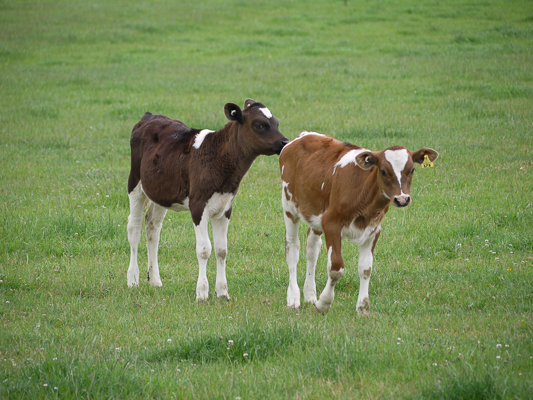
While we tend to see most lungworm infections post-Christmas, seasonal conditions may lead to it rearing its ugly head before we are expecting it, so vigilance is important. It usually affects calves under 10 months of age, and freshly weaned calves are very susceptible, but it can also affect older cattle.
The most common sign is coughing when shifting the mob, poor coats, and reduced growth rates, though severe cases can result in death. Management practices are important for preventing disease.
The lungworm lifecycle is quite a process. Calves eat the third stage larvae (L3) from around dung patches, and these larvae then penetrate through the gut into the lymph system, moult to an L4, move to the bloodstream and travel to the heart and lungs within 7 days. From there they break into the airways, and the young adult worms lay eggs – about 4 weeks from the initial ingestion of larvae. These eggs are coughed up and swallowed, hatching in the gut. These first stage larvae (L1) pass out in the dung, and go through shedding to L2, then become infective L3s in the paddock, and so it starts again!
The calf will create an immune response to the presence of worms in the lungs by increasing fluids and froth, and this can affect breathing. The immune response results in death of the lungworm within 10 days and, within a few weeks, ultimate recovery and immunity for the calf. However sometimes the L4 larvae can go dormant in the lungs and remain there unaffected until the next spring, especially in colder climates. It is the damage to the lungs from worms and debris that can make recovery seem slow, during which time pneumonia or bacterial infection may develop. In severe cases, approximately 25% will worsen at around 8 weeks due to the calves` reaction to the dead parasites.
Most drenches administered accurately will eliminate lungworm, with the ML families giving a bit more protection against reinfection. At times, a strategic long-acting mectin drench may be given to give good protection in the case of a severe lungworm challenge. Although some exposure to lungworm is required for immunity to develop, we see issues when exposure is very high. This may be when drench intervals have been extended (often around Christmas), when calf paddocks are reused year on year, when young calves graze where older calves have been, when there is low cross-grazing from year to year, or when the climate has been warm and humid. As opposed to gastrointestinal worms, hay or silage paddocks that have been cut are a higher risk for lungworm that have overwintered.
At all times, contact your Vetlife veterinarian at the first signs of problems.